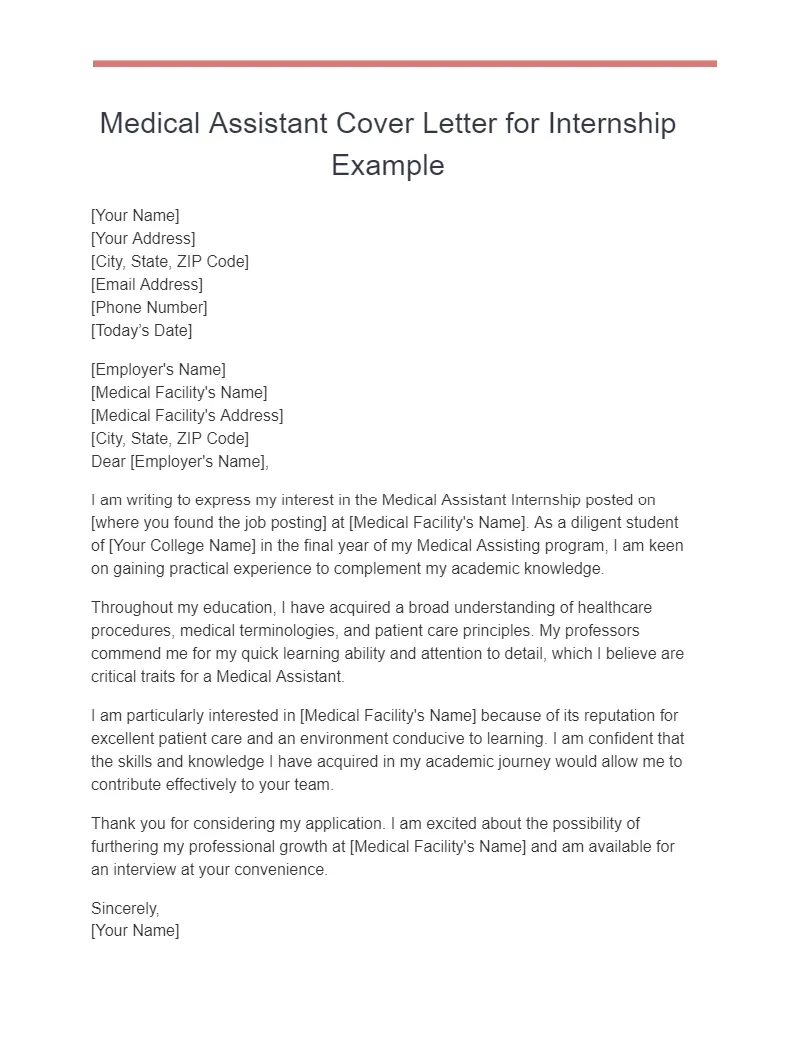Crafting Your Medical Assistant Cover Letter
A well-crafted medical assistant cover letter is your first opportunity to make a strong impression on potential employers. It serves as an introduction, showcasing your qualifications, experience, and enthusiasm for the position. This guide provides a comprehensive overview of how to create a compelling cover letter that will increase your chances of landing an interview and ultimately, your dream job. This includes everything from understanding its importance to the final steps of submitting your application. By following these guidelines, you can create a standout cover letter that highlights your skills and experience.
Understanding the Importance of a Cover Letter
A cover letter is not just a formality; it’s a crucial tool in your job search. In the competitive field of healthcare, especially for roles like medical assistants, a well-written cover letter can set you apart from other applicants. It allows you to go beyond the information listed on your resume, providing a narrative that highlights your personality, passion, and suitability for the role. A well-structured letter shows employers that you have the communication skills needed to perform the job. The cover letter lets you expand on your qualifications, demonstrating how your skills and experience align with the specific requirements of the position.
Why a Cover Letter is Crucial
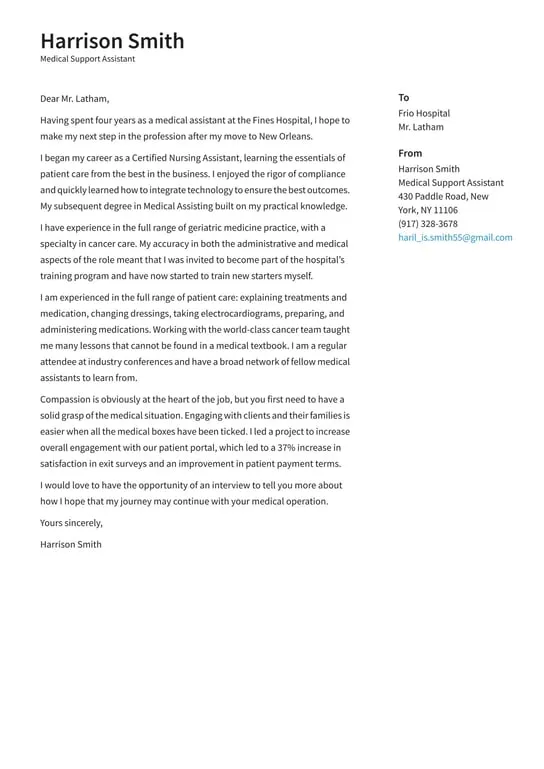
A cover letter gives you the chance to express your interest in the position and the company. It shows employers that you’ve taken the time to learn about their organization and are genuinely interested in joining their team. It provides a space for you to elaborate on key experiences and skills, adding depth to your resume. It is an opportunity to explain any employment gaps or career transitions in a professional manner. Also, the letter allows you to demonstrate your writing skills, which are essential for communication in a healthcare setting. The absence of a cover letter may lead employers to believe that you lack attention to detail or a true interest in the role.
Highlighting Your Medical Assistant Experience
Your medical assistant experience is the cornerstone of your cover letter. It’s where you demonstrate your ability to perform the tasks and responsibilities required by the job. Clearly articulate your previous roles, highlighting your accomplishments and the impact you made in each position. Focus on the skills and experience that align with the job description. Avoid simply listing your duties; instead, focus on achievements and the positive outcomes you helped generate. Use specific examples to showcase your expertise. When writing about your experience, provide details about the specific tasks you performed, the tools and software you used, and the types of patients you worked with. Also, you may quantify your accomplishments to increase the impact of your statements.
Key Elements to Include
A strong medical assistant cover letter includes several key elements that should be incorporated to make your letter complete. These elements help to give a clear impression to the employers. The essential elements include your contact information, a professional salutation, a clear statement of your objective, a showcase of relevant experience, and an impactful conclusion. Each of these elements plays a crucial role in presenting you as a qualified candidate. By including them, you make it easier for the hiring manager to quickly understand your suitability for the role. Remember to keep your cover letter focused and concise, highlighting the information that matters most.
Your Contact Information
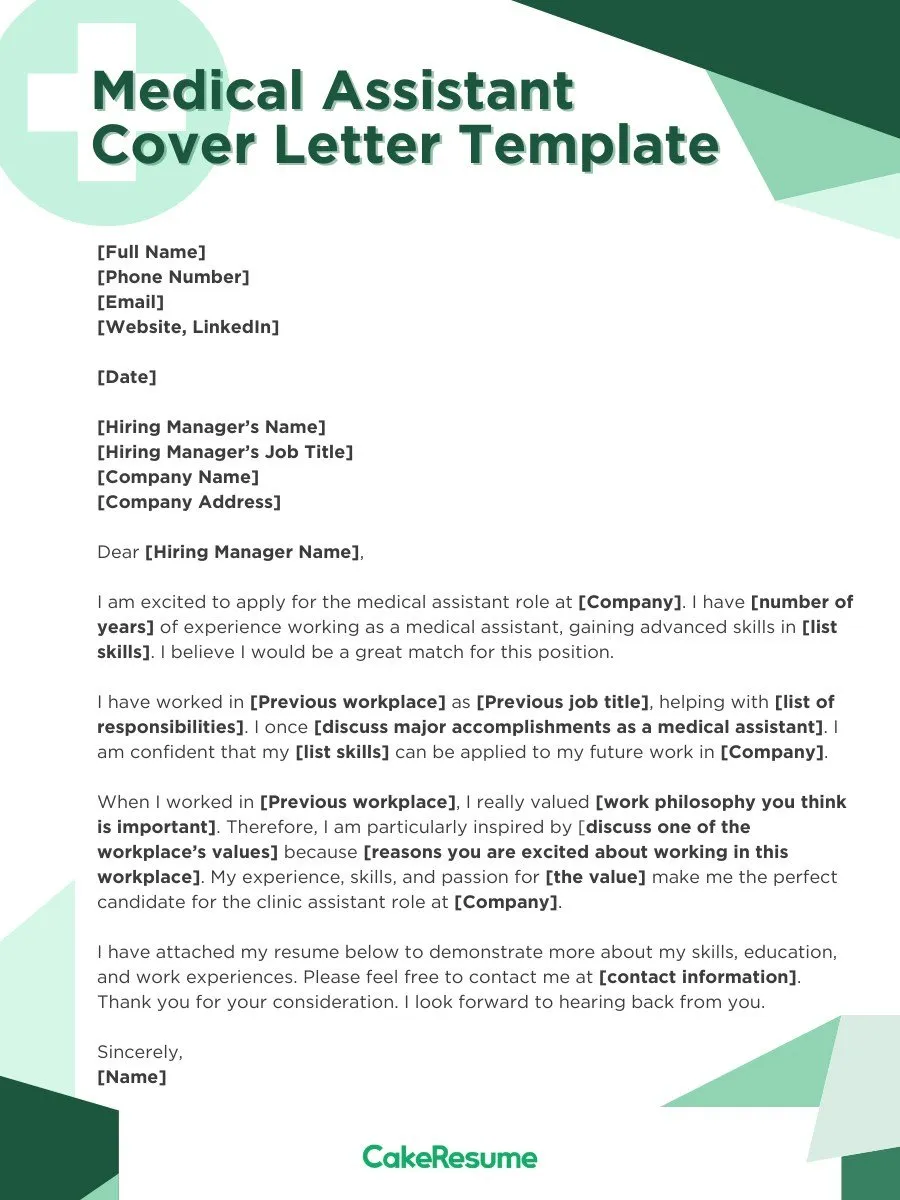
Begin your cover letter with your contact information. This includes your full name, phone number, professional email address, and, optionally, your LinkedIn profile URL. Make sure your contact information is easy to find and is placed at the top of the letter. Use a professional email address. Double-check all contact details for accuracy to ensure that the hiring manager can easily reach you. This is an easy step but vital, as it helps the employer to take the next step after reading your cover letter and wanting to contact you.
Professional Salutation
Use a professional salutation. If you know the hiring manager’s name, address your letter to them. If you don’t know their name, use a general greeting like ‘Dear Hiring Manager.’ Avoid generic greetings such as ‘To Whom It May Concern’. Always maintain a professional tone throughout your cover letter. Ensure your salutation is grammatically correct and appropriate for the industry. A personalized salutation shows that you’ve taken the time to research the company and the role, making a better first impression.
Stating Your Objective
Clearly state your objective in your cover letter. Express the specific medical assistant position you are applying for and your interest in the role and the company. Briefly mention what attracts you to the role and what you hope to achieve. Avoid using generic statements; tailor your objective to match the job description. Demonstrate your enthusiasm and commitment to the healthcare field. Use clear and concise language to make your objective easy to understand. Your objective provides the hiring manager with a clear understanding of your goals.
Showcasing Relevant Experience
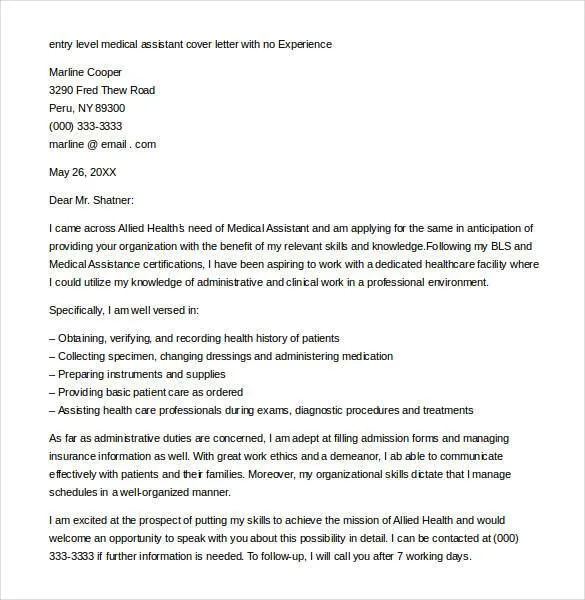
Dedicate a significant portion of your cover letter to highlighting your relevant experience. Describe your previous roles as a medical assistant, focusing on your responsibilities, achievements, and skills. Use specific examples to showcase your expertise and what you bring to the role. Provide details about the tasks you performed, such as assisting with patient examinations, taking medical histories, and administering medications. Also include any experience with electronic health records (EHR) systems or other software used in medical practices. Mention any experience you have working with specific patient populations or in particular medical specialties, and emphasize results-driven accomplishments. The more detail you provide, the better, but keep it concise.
Quantifying Your Achievements
Whenever possible, quantify your achievements to make a stronger impact. Use numbers, percentages, and specific data to demonstrate your successes. Instead of saying ‘Improved patient satisfaction,’ say ‘Increased patient satisfaction scores by 15%’. Quantifiable achievements provide concrete evidence of your skills and abilities. Use metrics to showcase your efficiency, accuracy, and contributions to previous employers. Use data to illustrate the impact you had in your previous positions and show employers that you can bring similar results to their organization. Adding numbers provides concrete evidence.
Tailoring Your Letter
Customize your cover letter for each job application. Review the job description carefully and tailor your letter to match the specific requirements and qualifications. Highlight the skills and experiences that are most relevant to the position. Customize the language and tone to align with the company’s culture. Refer to the company by name, and demonstrate that you understand their mission and values. Generic cover letters are easily recognized. Tailoring your letter shows employers that you are genuinely interested in their opportunity and are willing to go the extra mile.
Skills to Mention
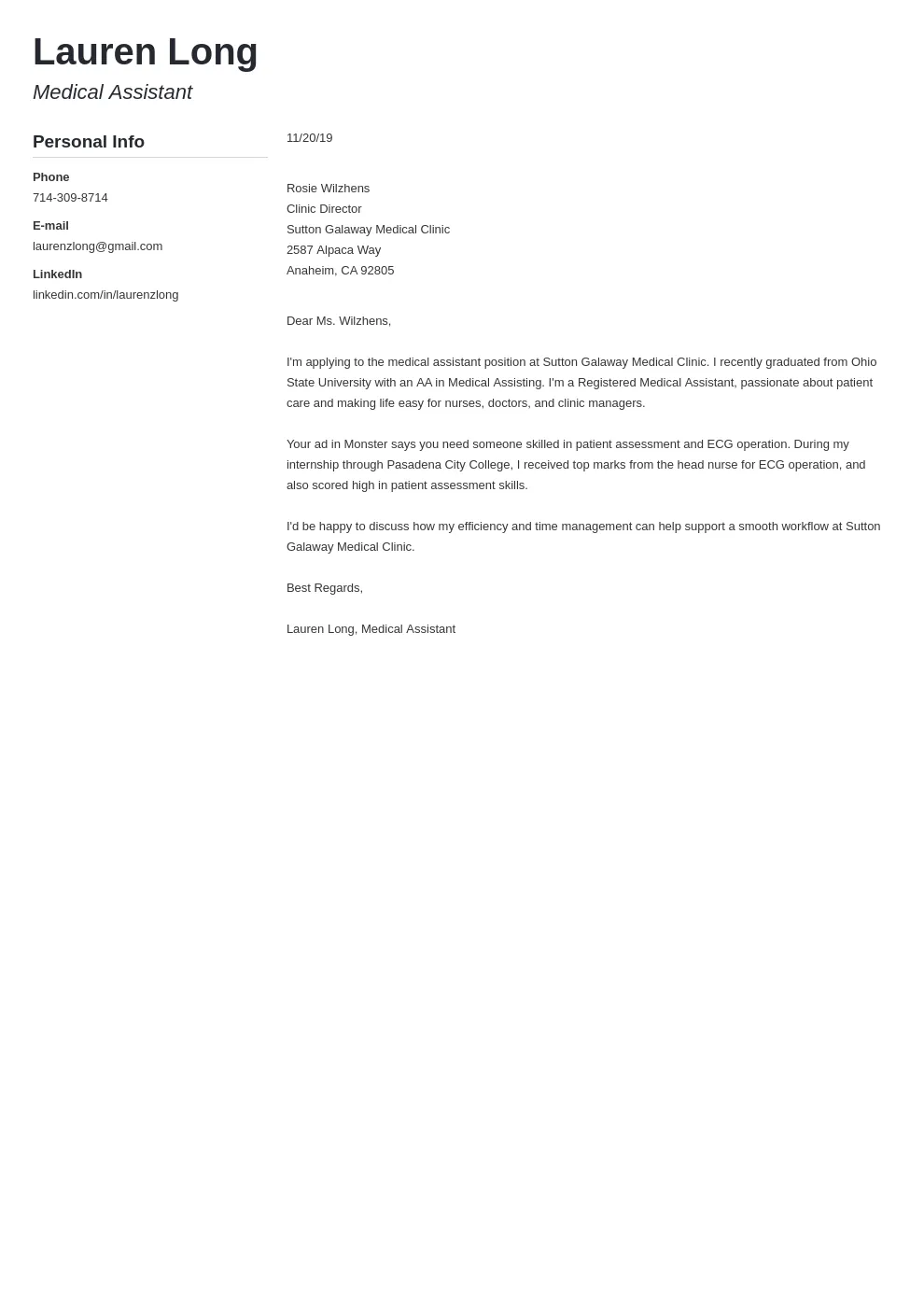
Include a section in your cover letter that lists your key skills. The skills you mention will be split into several areas. Be sure to include skills that match the job description and are relevant to medical assisting. Skills are a key area to show what you are capable of.
Clinical Skills
Mention your clinical skills, such as taking patient histories, measuring vital signs, assisting with examinations, and administering medications. Include skills related to phlebotomy, injections, and other clinical procedures. Also, include any experience with medical equipment and instruments. Highlight any specialized training or certifications you have that are relevant to clinical tasks.
Administrative Skills
Showcase your administrative skills, such as scheduling appointments, managing patient records, and handling insurance claims. Also mention your experience with electronic health records (EHR) systems and other office software. Emphasize your organizational abilities and your proficiency in managing patient data. Include experience in handling billing, coding, and insurance verification. If you have experience with patient communication and reception duties, be sure to include that as well.
Soft Skills
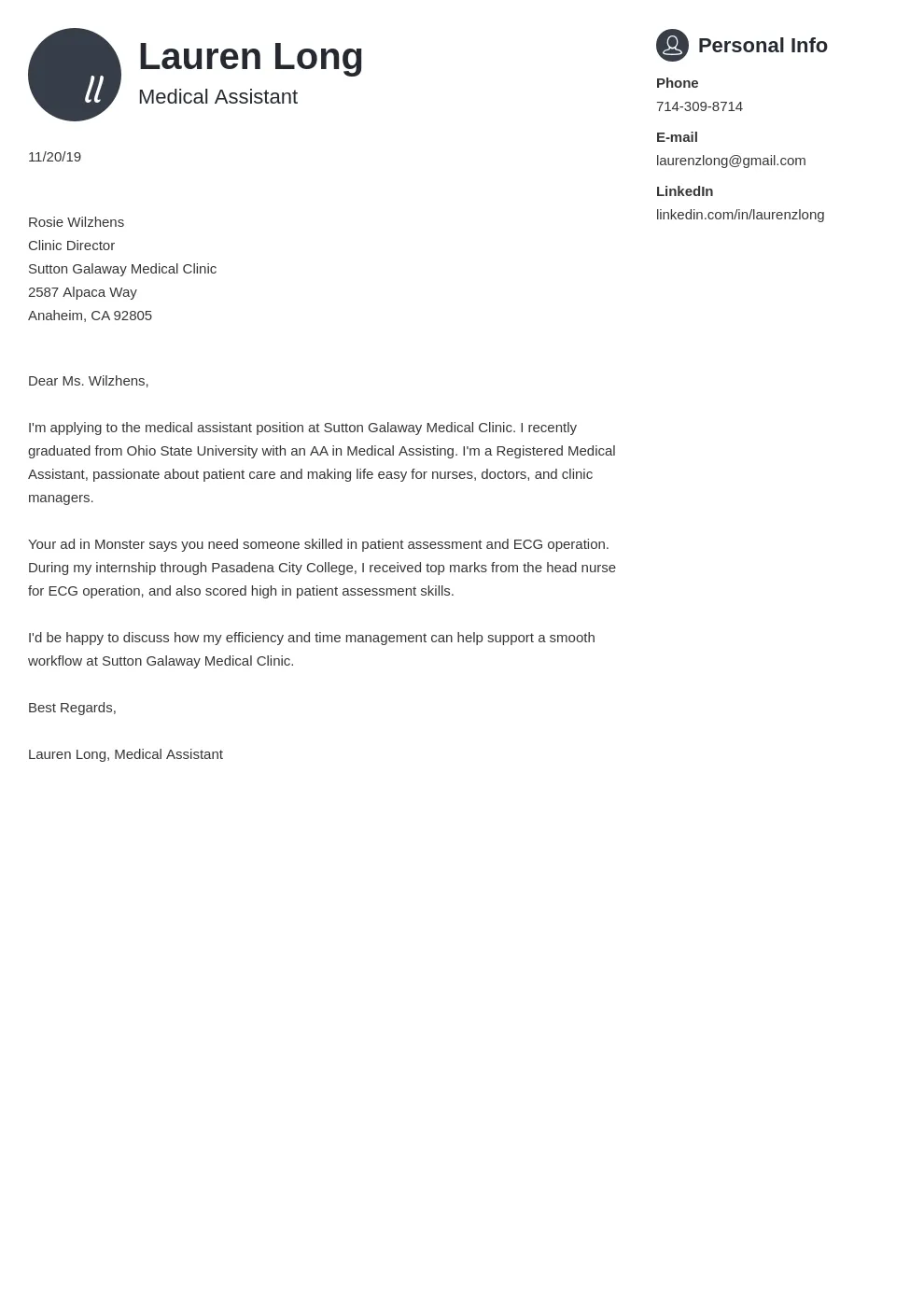
Highlight your soft skills, such as communication, teamwork, and problem-solving. Include your ability to work with diverse patient populations and demonstrate empathy and compassion. Also, emphasize your adaptability, time management, and attention to detail. Mention your ability to handle stressful situations and your commitment to maintaining patient confidentiality. Soft skills are just as important as clinical and administrative skills.
Formatting Your Cover Letter
Proper formatting is essential for creating a professional cover letter. A well-formatted letter is easy to read and makes a positive first impression. Use a clean and readable font, such as Times New Roman or Arial, and maintain consistent formatting throughout your letter. Use clear headings, bullet points, and white space to organize your information. Pay attention to the layout, spacing, and overall appearance of your letter.
Professional Formatting Tips
Use a professional font size, typically between 10 and 12 points. Maintain consistent margins, usually 1 inch on all sides. Use single or 1.15 line spacing for easy readability. Break up large blocks of text into shorter paragraphs. Use bullet points to highlight key skills, accomplishments, and responsibilities. Make sure the formatting is consistent throughout the entire document. Use these simple formatting tips to ensure your cover letter looks polished and professional.
Using Action Verbs

Use action verbs to start your sentences and describe your accomplishments. This will make your statements more engaging and impactful. Action verbs help you to be clear and concise. For example, instead of saying ‘Responsible for managing patient records,’ write ‘Managed patient records’. Include action verbs in the letter to start each sentence, which will make it more impactful. Using action verbs makes it easier for the reader to understand what you have done and how you contributed to your past employers.
Proofreading and Editing
Proofread and edit your cover letter carefully before submitting it. Check for any grammatical errors, spelling mistakes, and punctuation errors. Review the content for clarity, conciseness, and accuracy. Have a friend, family member, or career counselor review your letter for feedback. Proofreading and editing ensures that your cover letter is free of errors and presents you in the best possible light. A cover letter filled with errors can leave a poor impression and could lead to rejection, so take the time to ensure it is error-free.
Common Mistakes to Avoid
Avoid common mistakes in your medical assistant cover letter to ensure it makes a positive impact. These mistakes can undermine your qualifications and reduce your chances of getting an interview. Be sure to avoid all of the following to help give you the best chance.
Unprofessional Language
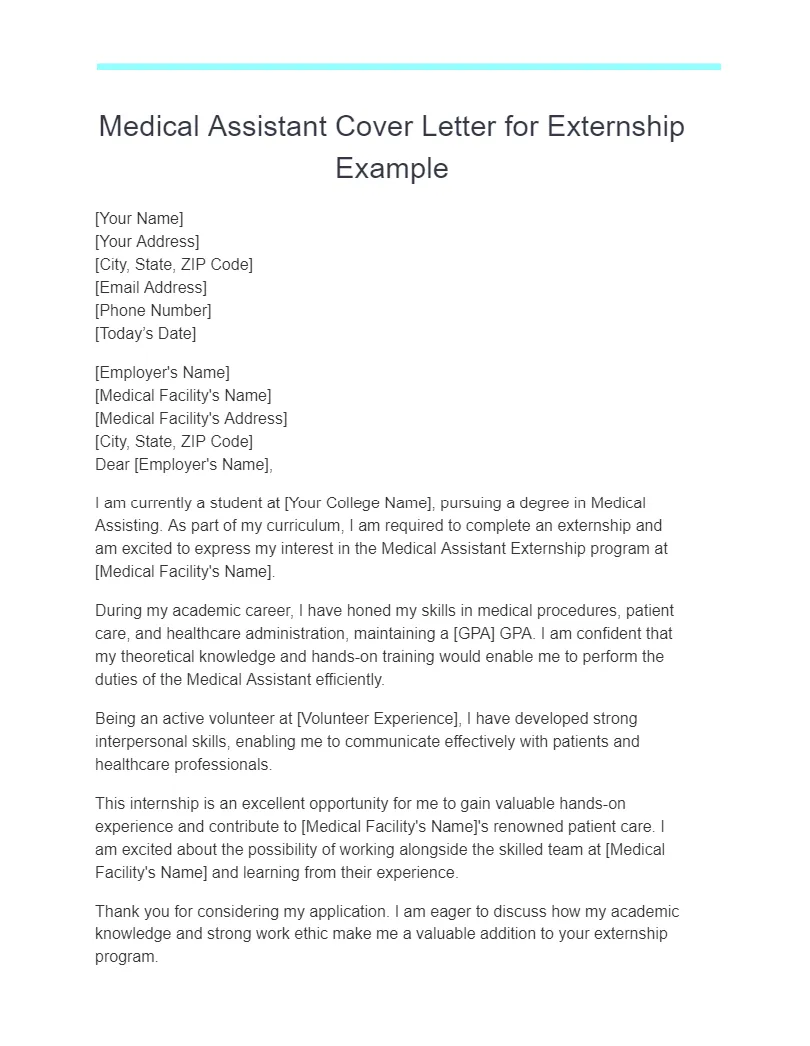
Avoid using unprofessional language, slang, or informal tone. Use a professional and respectful tone throughout your cover letter. Maintain a formal tone and avoid any language that could be considered offensive or inappropriate. Using professional language demonstrates your maturity and respect for the position.
Generic Content
Avoid using generic content that could apply to any job. Tailor your cover letter to the specific job and company you are applying for. Customize your letter to highlight the skills and experiences that are most relevant to the position. Show the hiring manager that you understand their needs and are interested in their organization. Avoid sending the same cover letter to every employer.
Poor Formatting
Avoid poor formatting such as inconsistent font, margins, and spacing. Use a clean and professional layout that is easy to read. Use clear headings, bullet points, and white space to organize your information. Proofread your cover letter to ensure that the formatting is consistent throughout.
Finalizing and Submitting
Before submitting your cover letter, make sure you have followed all of the above guidelines. Now it is time to review and submit.
Tips for Submitting Online
Follow the employer’s instructions for submitting your cover letter online. Usually, this involves attaching it as a PDF or Word document. Name your file appropriately, using your name and the job title, for example, ‘JaneDoe_MedicalAssistantCoverLetter.pdf’. Ensure that your cover letter is formatted correctly and is easily readable. Proofread your cover letter one last time before submitting it, and double-check all the details.
Follow-Up Strategies
After submitting your cover letter, follow up with the employer to express your continued interest. Send a thank-you note to the hiring manager. In your email or note, reiterate your interest in the position and highlight a few key skills. Show your appreciation for the opportunity and your enthusiasm for the role. Following up demonstrates your professionalism and dedication. This final step can help give you the edge when applying for a job.
